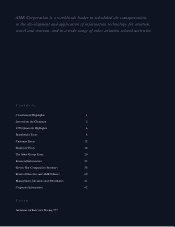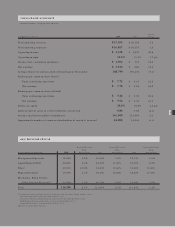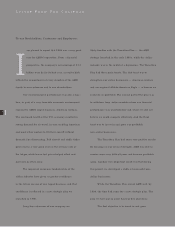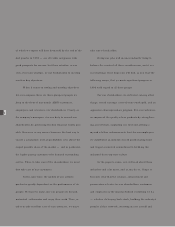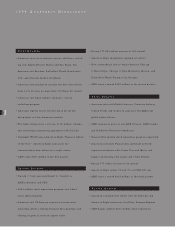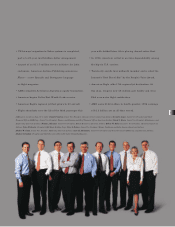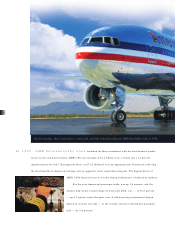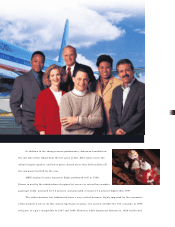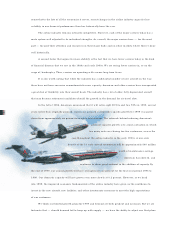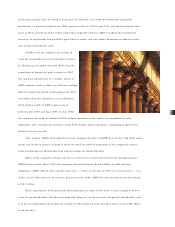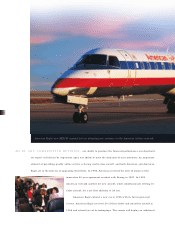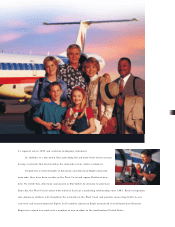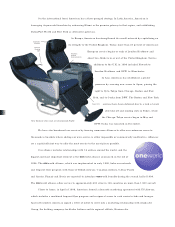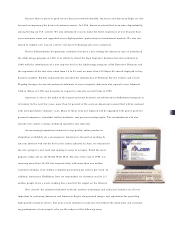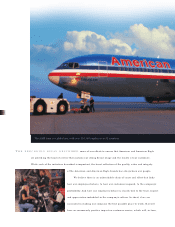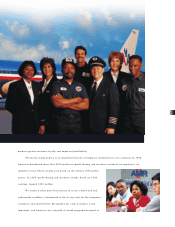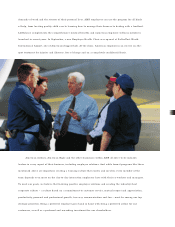American Airlines 1998 Annual Report Download - page 12
Download and view the complete annual report
Please find page 12 of the 1998 American Airlines annual report below. You can navigate through the pages in the report by either clicking on the pages listed below, or by using the keyword search tool below to find specific information within the annual report.
somewhat to the fate of all the economies it serves, recent changes in the airline industry argue for less
volatility in our financial performance than has historically been the case.
The airline industry remains intensely competitive. However, each of the major carriers today has a
route system well adjusted to its individual strengths. As a result, the major carriers have — for the most
part — focused their attention and resources on their major hubs and on other markets where they’ve done
well historically.
A second factor that argues for more stability is the fact that we have fewer carriers today in the kind
of financial disarray that we saw in the 1980s and early 1990s. We are seeing fewer carriers in, or on the
verge of, bankruptcy. Thus, carriers are operating with a more long-term focus.
It is also worth noting that while the industry has a substantial number of new aircraft on the way,
there have not been excessive commitments for new capacity. American and other carriers have incorporated
a great deal of flexibility into their aircraft deals. The industry has a lot of older, fully depreciated aircraft
that may become retirement candidates should the growth in the demand for air travel slow.
In the fall of 1998, American announced that it will retire eight DC10s and two 727s in 1999, several
years earlier than originally planned. American’s planned systemwide capacity growth for 1999 was pared
down from approximately six percent to roughly four percent. The rationale behind reducing American’s
planned capacity growth is to avoid a situation in which
too many seats are chasing too few customers, as was the
case throughout the airline industry in the early 1990s. A nice side
benefit of the 10 early aircraft retirements will be approximately $40 million
worth of maintenance savings.
American has showed, and
continues to show, great restraint in the addition of capacity. By
the end of 1999, our annual growth will have averaged just one percent for the four-year period 1995 to
1999. Our domestic capacity will have grown even more slowly at 0.2 percent. However, as we head
into 1999, the improved economic fundamentals of the airline industry have given us the confidence to
invest in the new aircraft, new facilities, and other investments necessary to meet the high expectations
of our customers.
We think our limited growth plans for 1999 and beyond are both prudent and necessary. But we are
fortunate that — should demand fail to keep up with supply — we have the ability to adjust our fleet plans
10


